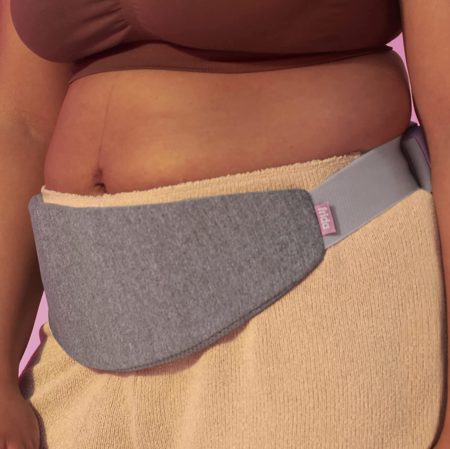What to expect during a C-section: 27 things I wish I’d known
3. Each day gets a little bit better.

LWA/Dann Tardif/Getty
We independently select and share the products we love—and may receive a commission if you choose to buy.
I always said that my birth plan was to go with the flow, and to have “a healthy mom and a healthy baby.”
I didn’t want to get my heart set on certain things happening, because knowing my personality, it would be harder for me to accept when things didn’t go as planned that way. I didn’t know what to expect because I had never been in labor before. I was giving birth for the first time. So I planned to just play things by ear and see how they went.
As labor progressed and then didn’t anymore, it became clear that I needed to have a C-section in order to deliver Raleigh safely. There was no hesitation from my partner and I—we were OK with the decision.
Motherly's Digital Classes

I knew C-sections happen often, and I know lots of people who have had them. I have a nursing degree and I did my internship on the same labor and delivery floor of the same hospital that I delivered at. I was in the operating room for several C-sections during my internship.
But what I didn’t know was what it was actually like to have a C-section.
I didn’t know what to expect during a C-section.
No one had ever told me what it was really like to have one, and what to expect after mine.
I wasn’t prepared for the recovery process.
Here’s what to expect during a C-section—and 23 things I wish I had known
Had I known these things, I think my recovery would have been less anxiety-filled, because I would have known what to expect.
1. It is major surgery
Yes, C-sections are pretty common these days. I heard a statistic that said as many as one-third of babies are born this way. But still, it is major surgery.
Related: A brief history of the C-section
2. Getting up to walk is ROUGH at first
It’s going to hurt like heck when you get out of bed and walk for the first time, which they make you do relatively soon after surgery. You will feel like you are 100 years old and you can’t stand up straight. You will likely shuffle around as you remain hunched over. This is NORMAL.
Related: How to have a positive birth experience with a C-section
3. Each day gets a little bit better
You will feel a little bit better with every day that passes. I was told this by one of my nurses who had 4 C-sections herself and was pregnant again. I consider her an expert.
4. Take medication for the pain
You will be offered narcotics in the early days after surgery. I didn’t take the narcotics because I’m prone to nausea as a side effect. But I got some IV medication that was like strong ibuprofen, and when I went home, I rotated ibuprofen and Tylenol for the first week or two. If you can stay on top of the pain, you will be able to move better and care for yourself and your baby better.
5. It hurts like crazy to cough, laugh or sneeze
Holding a pillow against your incision, or pressing on it with your hands might help a little bit. But in those early days, it’s going to hurt, period. I tried my hardest not to do any of these three at first. Some places might make you practice coughing to clear your lungs. (I read that in my baby book.) No one made me do that at our hospital.
Related: Chewing gum after a C-section could help you leave the hospital sooner
6. The swelling in your body will likely get worse before it gets better
You receive a lot of IV fluids in the hospital during labor and during the C-section. These made my already swollen face, legs and feet even bigger before my body started to get rid of the excess fluid. Really, my whole body was swollen. It will go away over the next week or two.
7. Accept help when you go home
Cooking help, cleaning help, child care help. Accept it all because you will need it. Remember, you just had major surgery.
Related: 8 things to do now to prepare for your C-section
8. You need to take care of yourself
Expect to be taking care of yourself in the early days as you recover enough to take care of your baby. I didn’t anticipate how hard it would be to try to care for a baby while I was recovering too. I mainly focused on feeding Raleigh in the early days and Matt did the rest of everything. Once I started to feel and move better, I took on more of the responsibilities.
9. Be careful with how you move
Don’t do anything resembling a sit up or anything that strains the ab muscles. Don’t try to use your abs to sit up from laying down on your back. (Especially if you’re holding your baby. I accidentally did that.) Roll to your side and use your arms to push yourself up instead.
Sleep in a recliner if laying flat hurts too much at first. If you overdo it, you might injure yourself and possibly cause problems with your incision. I tweaked things at least once, although thankfully not to the point of needing to go in for treatment. But I sure did get sore from it.
Related: Secrets to better postpartum care from mothers around the globe
10. Use an abdominal binder
This might help you feel more stabilized as your incision and muscles heal. I didn’t use mine until after a week or so, but I wish I would have used it right away. It would have offered me some support when I needed it badly.

11. Expect soreness
Especially in the scar tissue beneath the incision—this is where I have had the most tenderness since my surgery. Expect the soreness to move, too. One day, the right side might be sore and the next, the left.
12. Ice might help
Buy a couple ice packs or take a few home from the hospital and use them when you’re resting. It will help decrease inflammation, swelling and pain.
13. Expect numbness
You will likely feel numbness and tingling in your lower abdomen around the incision area. This is a normal result of the surgery because of the affected nerves. It will get better with time.
14. Don’t overdo it
You’ll hear this advice offered a lot. I was also told that everyone does overdo it at some point. Once you start to feel a little better, resist the urge to do all the things. If you do too much, you’ll take a few steps backwards and likely have a lot more pain and tenderness for a couple days.
Related: How long does it take to recover from a C-section?
15. No heavy lifting
My mother-in-law had three C-sections and she said she remembers being told not to lift anything heavier than a gallon of milk. Really, your baby is the heaviest thing you should be lifting.
This is tricky with a car seat, though. If I went anywhere, I needed to lift the car seat in and out. Add a 9-pound baby to that, and it was really hard not to lift too much. Initially, I got help as much as I could when I needed to go to appointments or on errands. Once I was feeling a little better, I used my stroller to go places instead of carrying the car seat very far.
16. No driving for a while
I was told not to drive until you can slam on the brakes without pain. And sit comfortably in the car too.
17. Watch for signs of infection
Increased pain, swelling, redness, heat or drainage from the incision, fever or chills… Report any signs of infection to your doctor asap.
18. Some swelling around the incision is normal
Don’t worry yet—let time pass and see how it goes. Things are trying to heal beneath the surface, and through all the layers that were cut. It will get better.
19. Start walking as soon as you can
But again, don’t overdo it. Take it easy. The more mobile you are though, the better you will feel. Physically AND mentally.
20. Hormones will likely make everything seem and feel worse
This is normal. However, if you feel like you’re passing the baby blues phase and heading into postpartum depression, talk to your doctor.
21. It’s OK to grieve
You may feel some regret about having a C-section, or grieve the “loss” of a vaginal birth. These are normal feelings too. Give yourself grace. You sacrificed yourself to bring your baby into this world in a way that is truly selfless. You are a warrior.
Related: I grieved the birth experience I didn’t get
22. C-sections are REAL births
This might seem obvious, but a lot of people don’t realize that they consider C-sections to be a lesser form of birth. That they are somehow inferior to those who have had vaginal deliveries. You are not a lesser mom because you had to have a C-section. Remember, you sacrificed yourself completely, you were CUT OPEN, so that your baby could have life. Be kind to yourself.

Related: PSA: C-sections are not the easy way out
23. The C-section recovery is a long process
You will need patience. If you push it or do things you aren’t supposed to, you will permanently injure yourself. Instead, go slow. Do approved core exercises. Again, you had major surgery. Your body went through a lot. Be patient and be kind to yourself.
4 extra C-section recovery tips
1. Prepare ahead of time
Make freezer meals and buy easy to eat snacks and beverages to make staying fueled and hydrated quick and easy. If you are having a scheduled C-section or if at all possible before delivery, stock up on groceries too. Make things as easy as possible for your return home. My go-to’s are granola bars for snacks, and crockpot meals for supper. I use crockpot liners to make cleanup even quicker.
2. Remember, health is most important
A healthy mom and a healthy baby is the most important goal, above all else. Keep that in mind to ensure the proper perspective through it all.
3. Journal throughout the process so you are able to remember the early moments
The hospital stay was such a blur to me. I was really introspective and focused on the aftermath of surgery. I’m very thankful for my journal entries, as well as the photos my partner took, to help me relive that time.
4. Even if you are more swollen than you’ve ever been in your life, you need to be in some of the photos.
I didn’t want to be in any photos in the early days because I looked terrible and felt even worse. But it’s so important to have at least a few of you from that time. You and your baby especially. Those pictures will be cherished by them someday, because they show the sacrifice you made to give your baby life.
My hope is that knowing these things will help make any future C-sections I have a lot easier to plan for, deal with and recover from.
I hope the same for you too.
This article was originally published on LauraRadniecki.com. It has been updated.





